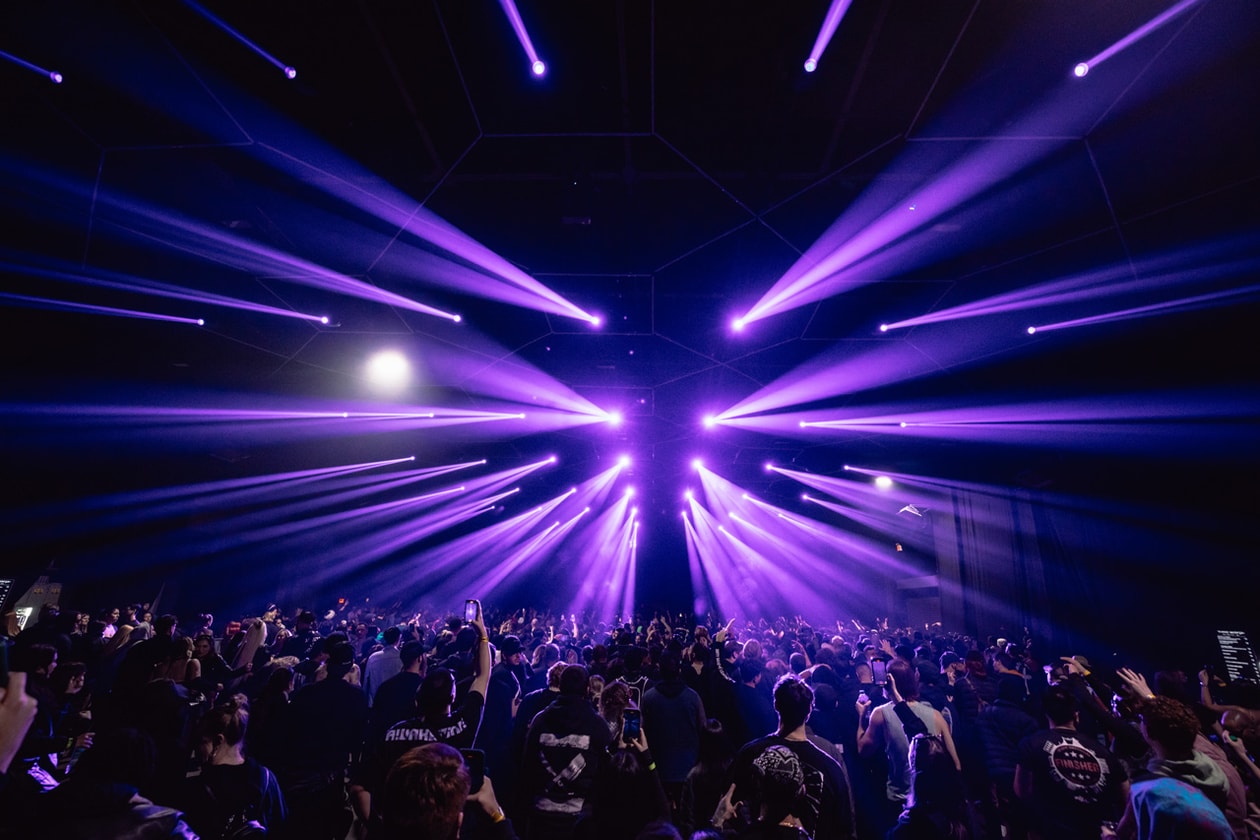Time Warp Is Throwing It Back To Technos Heydays
From Detroit to Budapest, every major city has its own style of techno, but no country embraces the genre quite like Germany. This closeness has its historical roots, especially during the fall of the Berlin Wall in 1989, when West Germans dared to organize parties again after years of government repression. Inspired by Detroit's techno boom, the Germans wrote the rules of raves: sterile lineups, energetic crowds and, of course, crowd-pleasing DJs.
As a genre that typically falls under the umbrella of electronic music, the definition of techno and what constitutes a rave has become a bit blurred over the years. Time Warp, a traveling music festival, wants to set the record straight by inviting international audiences to experience a "real" German techno rave. In 1994, Time Warp held their first rave in Walzmühl, once one of Europe's largest factories, located in the German city of Mannheim. Over the past three decades, Time Warp has been held in major cities around the world and has featured artists such as Richie Hawtin, Laurent Garnier and Sven Vath over the years.
Over the weekend, Time Warp headed to New York City for two nights of non-stop fun in Brooklyn, in partnership with Teksupport. In a new interview, Robin Ebinger, founder of Time Warp US, and Rob Thoma, founder of Teksupport, talk about what he calls the real "German rave", organizing the event in New York and the evolution of techno over the years.
Time Warp describes itself as a "true German rave experience". What does this mean in terms of the specific experience of participation? What can a raver expect from a Time Warp party?
Ebinger: People and the media often refer to the original Time Warp as the most iconic techno festival in the world - a true rave that retains the true cultural spirit. From my point of view, what sets Time Warp apart is our intrinsic connection with the dance floor and our close connection with the stage and artists.
We approach every performance with nervous excitement, ensuring that our love of music and dedication shines through. We also pay close attention to the details of the dance floors. This means we aim to illuminate the entire room rather than just placing lights and video on stages. This is a symbiosis of light, video and sound. Participating in Time Warp is not only an opportunity to enjoy good music, but also an opportunity to become part of a cultural phenomenon.
As an event that takes place in Germany but travels around the world, how do you tailor the experience to a specific city and its techno culture?
Ebinger: Creating Time Warp experiences for different cities and their different tech cultures requires a thoughtful and flexible approach. Equally important is the choice of local partners. For example, here in New York the Teksupport team have become good friends.
The last festival was held at the Brooklyn Navy Yard, an industrial warehouse of sorts. Aesthetically, what are we trying to create with Time Warp? Can you tell me about the decision-making process for choosing venues and training artists?
Toms: Mannheim and some other versions of Time Warp often have up to five levels, but in the US it's much harder to find places with large capacity. Teksupport had always operated out of the Brooklyn Navy Yard, but placed Time Warp there specifically because we could build a tunnel and activate two adjacent buildings to create a two-story experience.
This year we found a balance between pure techno in one room and more house and techno in the other. We wanted to not only hear pure techno at both venues, but also diversify the lineup to tone down the techno-house sound and include more house and techno favorites.
Ebinger: Choosing a location adds another layer of complexity. This must be a space where our vision for production can come to life.
Meanwhile, the program selection is a collaboration that showcases Time Warp's iconic talent and local market strengths. This process requires us to understand which international artists resonate with audiences, providing a platform for new and established local talent.
You've already talked about wanting to make Time Warp events "intimate." Knowing that an event can attract up to 20,000 people, how can you develop this feeling?
Toma: Many large festivals and events focus mainly on set design, and our products cover the entire site. We create a 360-degree experience that doesn't focus on one scene. We also designed an audio system that plays music at a lower level through a wider range of speakers and evenly distributes sound levels.





